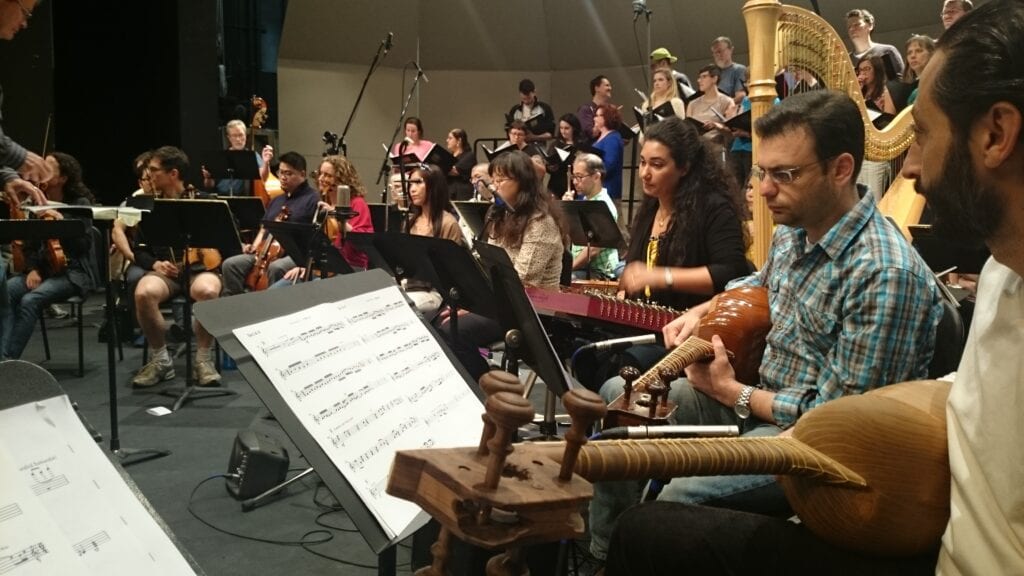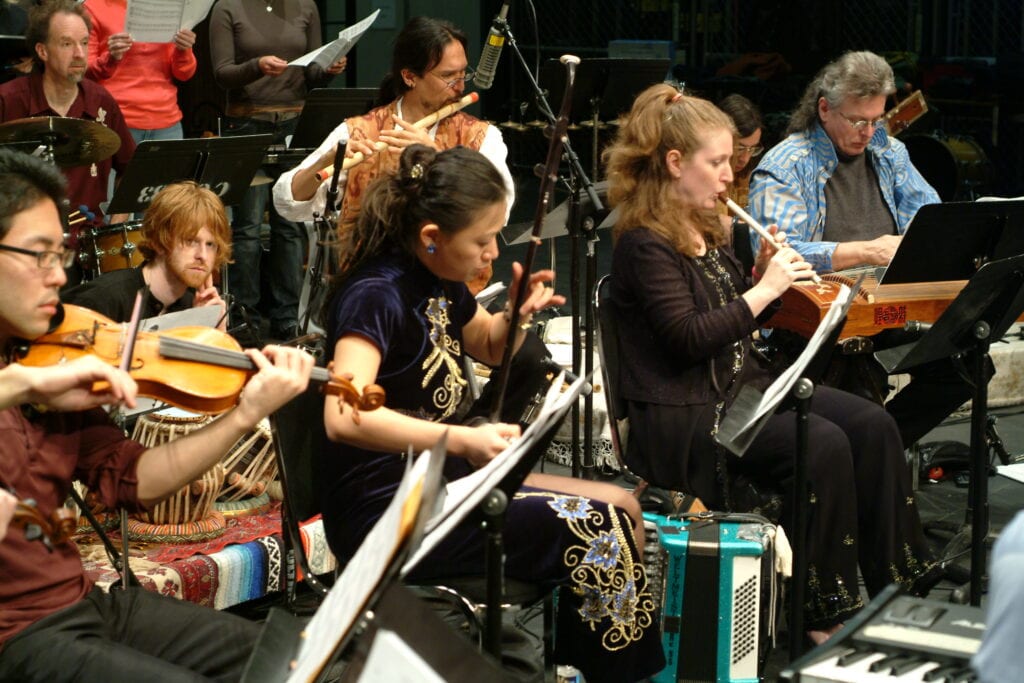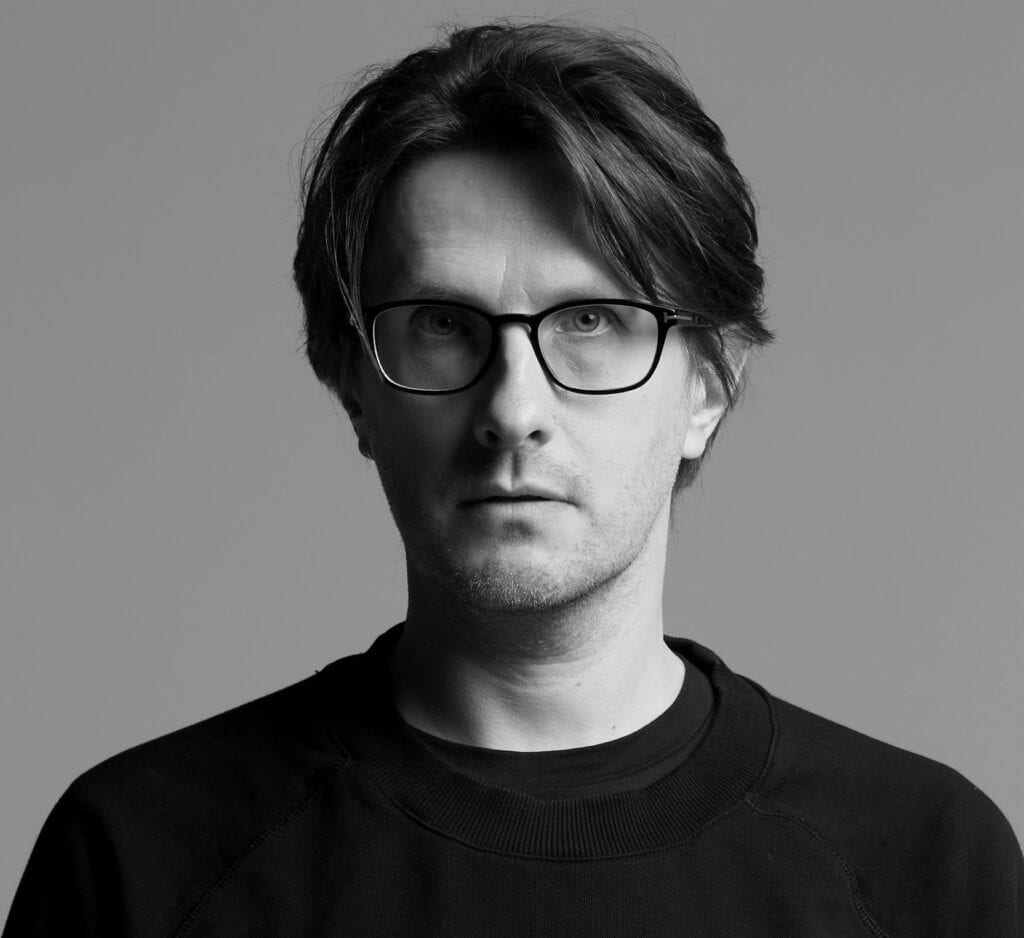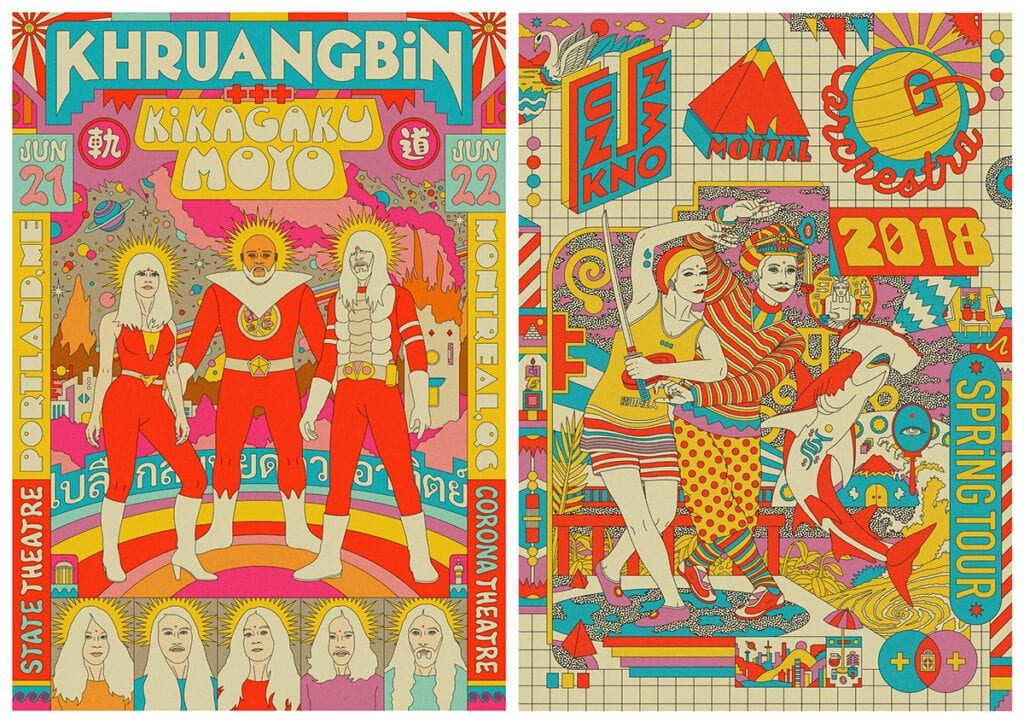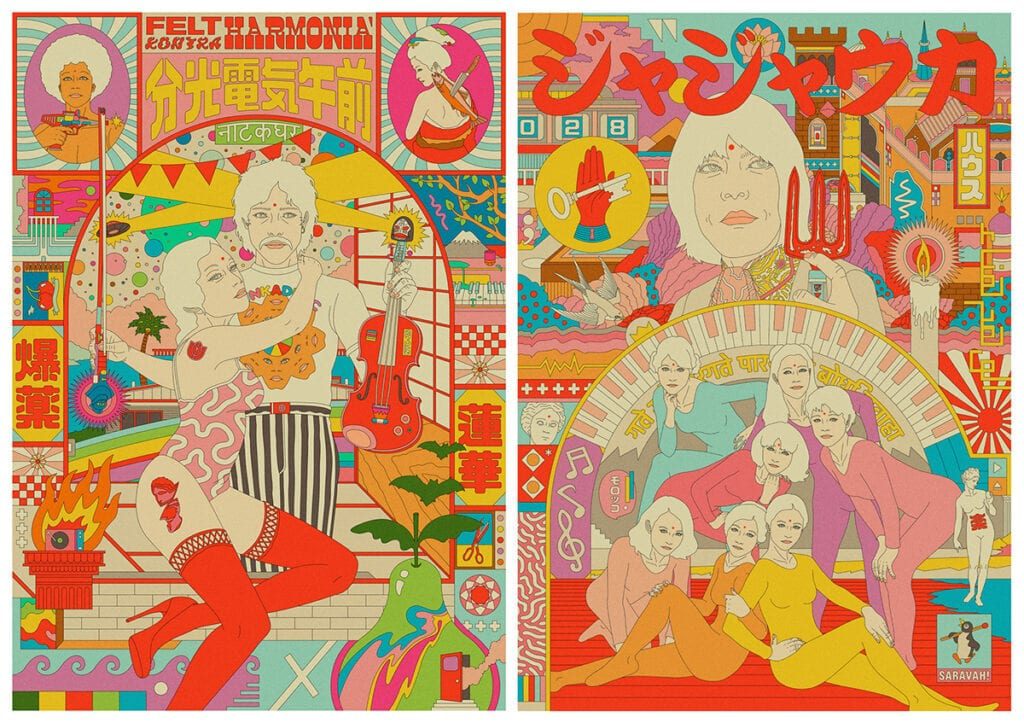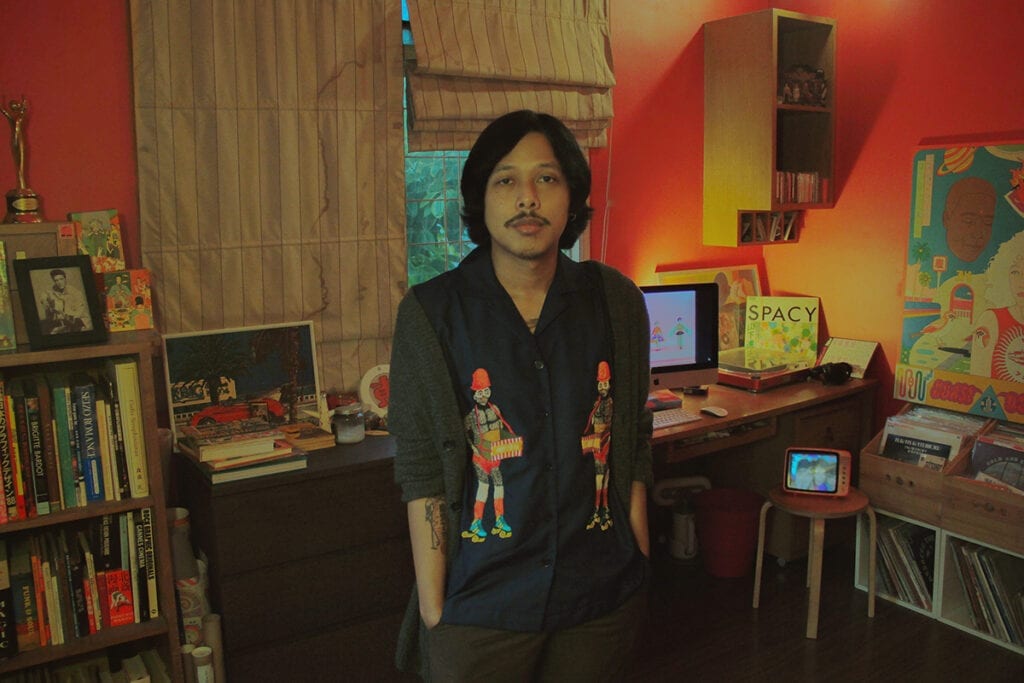Since it’s now impossible to turn away from ourselves or get caught up in the whirlwind of distractions offered by consumer society, the isolation of quarantine forces us to draw new ideas from past experiences, be they distressing or enriching.
This cryptic search can be experienced as a descent into the hell of the depths of an internal mourning experience. In the same manner as Dante in The Divine Comedy, Blanck Mass reconstructs this inner journey in the form of a personal sonic travel log and takes us on a tour of the various echo chambers of his mind, with the help of sound recordings captured while travelling and touring. Each piece is composed of abstract emotions and cinematic memories that blend with different, sometimes heart-rending drone textures or lighter melodic lines composed on the synthesizer. PAN M 360 reached the artist at his studio in Scotland to fill in the spaces between the lines of the recordings.
PAN M 360: The main subject of In Ferneaux revolves around pain in motion and its utility through inner work. When did you start this process?
Blanck Mass: It was very internal. I was conscious of not wanting to put out a lockdown record for the sake of putting a lockdown record. For the past ten years or so, touring has involved making a lot of field recordings, even when I just travel. I wanted to use these field recordings as the basis for an actual space outside the space that I found myself in constantly whilst recording In Ferneaux and kind of use these to tell a story of what’s happening internally within me, my inner dialogue, but using these actual existing spaces outside which bring back all kind of personal memories. Trying to repurpose them into some kind of cathartic experience. Sharing it with people is pretty intimidating because this is some of the most raw that I’ve felt at all for my whole life, some of the worst periods of my life.
PAN M 360: This album is more cinematographic, abstract and minimalist compared to your previous works. There are only two tracks, Phase I and Phase II. What was the vision you had for the album?
BM: There was a first version of In Ferneaux with just the unmanipulated field recordings. It was like library music that I was thinking about doing with the raw files. That was something that I was thinking about doing for a long time because I have hundreds and hundreds of these field recordings. There was a switch, for me personally and globally, and the project morphed into something different. Although the field recordings hold a lot of weight for me emotionally, I felt I wanted to add some more contemporary synthesizer sounds and repurpose it into one continuous whole. The emotional weight found within those recordings, and with the synthesizers, obviously sent me down a road where I have been before, with regards to layering and squeezing as much emotions as I can. It was extremely cathartic. With a record like this, it’s really difficult to say when it’s done. There’s no beginning or end to each song. I found it difficult to say when the job was done. But what needs to be said has been said.
PAN M 360: When you say that the misery and the blessing are one, do you mean that the album should be experienced in a nonlinear way?
BM: I don’t really like naming tracks and asserting my perceived aesthetic, but I understand it’s a necessary tool. I’m a huge fan of film scores. Narrative is always an important part of the things that I do, the journey it takes you on throughout. I thoroughly encourage listening to it in a nonlinear way. It’s a collection of my internal dialogues without the aid of syntax. If you want to go on a journey, it’s there for you to go on. I want you to experience it in your own way.
PAN M 360: You actually produced a film score yourself for the Irish crime drama movie Calm With Horses, which was directed by Nick Rowland and released in March 2020.
BM: It is something that I’ve wanted to do for a very long time and will continue to do so. I’m really happy that when I’m not touring, I can score movies. I feel very lucky to be in this position at this point in time. I’m looking forward to the next one.
PAN M 360: You wrote that In Ferneaux was about the trauma of a personal grieving process. The result is a collage of sounds which is organized like a playlist of sounds that are linked to one another to make a story, but that you could also shuffle and would still make sense.
BM: That’s really interesting. It’s like an open-source experiment. I’m glad you get that from it, actually. It doesn’t need to follow the particular timeline which it does. These can be almost like stages of my grief but people might experience it in a different order. Sharing your experience during these difficult times is quite bold. It was super cathartic and intimidating to share this but it’s part of the growth process.
PAN M 360: At the heart of the album, you present the encounter you had with a person you call a prophetic figure that you met on the streets of San Francisco. Why was it so memorable to you?
BM: I feel this person actually presented me with this whole new perspective on my experience. I was going through a lot personally when I met this person. They told me, “you don’t know how to handle the misery on the way to the blessing.” Going away and thinking about that, I completely see what they meant. I’m within this position and there is nothing I can do apart from utilizing the pain and trying to create something from that, which would be the blessing. That’s what gave me the push over the edge to create In Ferneaux after a long reflection, to actually use this as a tool and these collections of recordings I created throughout the years, to process my misery, to present it and bring something outside of it. To me, that is the blessing and that’s what In Ferneaux is all about. I have a lot to thank this person for. They shaped the process for me. It’s the one field recording which has not been manipulated. There is maybe more weight in that than on other recordings that are heavily manipulated. That’s a particularly profound moment, like a game-changing moment.
PAN M 360: There is also a very danceable party side to your project, which can be found on your album Animated Violence Mild or the songs you produced with Kite, for example. The bright, hyperpop, holographic sounds remind me a lot to the music you hear during some openly queer-friendly parties. Where does that influence come from?
BM: I don’t feel any shame in embracing that side of thing, I do have a lot of friends who are queer as you say, that’s a big part of my social group. With Animated Violence Mild, there was a kind of political statement of intent as well. I was talking a lot about capitalism and I was using these very over-the-top melody lines in a tongue-in-cheek way. Referring to the ’80s and the explosion of capitalism, and using particular synthesizers of that kind of time, were not in a nostalgic sense but more in a kind of low blow to poke fans. I try not to take it too seriously myself as well, I like to troll myself a little. But I love that kind of music, working with Kite is something that I love, they are really close friends now. There is a real queer-friendly kind of aesthetic and mentality, I tend to gravitate towards that. There is a freer side of things that I definitely feel an affinity towards. Even though I’m a goth, I’m not scared of a little bit of colour, you know.
PAN M 360: You seem very close to the queer artistic community. What makes you sensitive to it?
BM: On my last tour, I’ve taken along some very close friends who are drag queens, Frans Gender and Purpledisgrace. It’s very easy for electronic musicians to take themselves a little bit too seriously, and to take another electronic musician that sounds similar. It doesn’t really interest me, there’s a lot more going on in the world than just your particular little space. I pay to go to drag shows myself, you know. It was a lot fun to have a drag show every night.
